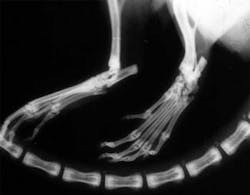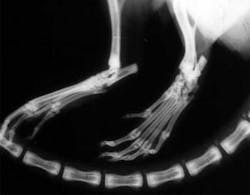Canadian facility to explore matter with femtosecond pulses
A newly announced laser facility at the Institut National de la Recherche Scientifique (INRS; Varennes, Que., Canada) will explore an ultrafast approach to the investigation of matter. Dubbed the Advanced Laser Light Source (ALLS), and funded by the Canada Foundation for Innovation (Ottawa, Ont.), an independent corporation established by the Canadian government, the facility will house a state-of-the-art multibeam femtosecond-laser system comprising five beam lines that will function at a wide range of wavelengths.
"The central concept of ALLS is to use a plurality of laser interactions, spanning the x-ray to IR spectral ranges, with sufficient peak power to manipulate matter at will and probe its dynamics," says Jean-Claude Kieffer, an INRS professor and the project's director. "Various light sources will comprise a multiline femtosecond 'rainbow' system that will deliver high photon fluxes."
For example, one of the beam lines will be built around a 100-Hz terawatt-level femtosecond laser developed by Thales Laser (Orsay, France). The laser, which has been commercially introduced by the company, was designed to provide high peak powers while maintaining a high repetition rate at a relatively low cost. Pumped by a diode-pumped solid-state laser, the 800-nm-emitting Ti:sapphire laser produces 28-fs, 17-mJ pulses with a beam quality M2 of 1.4 and contains an oscillator, pump, and amplifier, all fitting on a 2750 × 1500-mm table.
"In a first phase, we are planning to have simultaneously 4 TW in peak power and 8 W in average power, while keeping the beam manipulation and system complexity at a reasonable level," says Kieffer. "In the short term, the 100-Hz system will be used to generate high-average-power femtosecond hard x-rays for application in high-resolution medical imaging (for example, breast cancer), and in small-animal imaging with micro–computed tomography (micro-CT; see figure). The Thales system will allow us to simultaneously achieve the appropriate intensity on target and x-ray average power in order to have the fastest scan time with an x-ray point source for micro-CT. The goal is to demonstrate that scan time can be significantly decreased with a laser-based micro-CT system, compared to the best performances of today's micro-CT machines." The work is being done in collaboration with Andrzej Krol's group at SUNY Upstate Medical University (Syracuse, NY), Kieffer notes.
The leg of a mouse is imaged at INRS with hard x-rays generated by an ultrafast laser that produces 10-TW, 60-fs, 600-mJ pulses at a 10-Hz repetition rate. For the Advanced Laser Light Source project at INRS, additional ultrafast-laser beam lines will be erected to generate light with wavelengths from x-ray to IR; imaging techniques will include micro–computed tomography. One of the beam lines will use a Ti:sapphire laser operating at a 100-Hz repetition rate; the laser produces pulses of sufficient peak power to achieve efficient x-ray conversion without requiring the use of vacuum chambers to prevent air ionization.
In the longer term, the INRS researchers will push attoscience in collaboration with a group at the National Research Council (Ottawa, Ont., Canada) led by Paul Corkum, says Kieffer. "The generation of attosecond pulses in the soft x-ray range involves the interaction of an ultrashort pulse with a gas target and is based on the physics of high-harmonic generation," he explains. "This field explored by Corkum's group has potential application to the imaging of nuclear processes."

